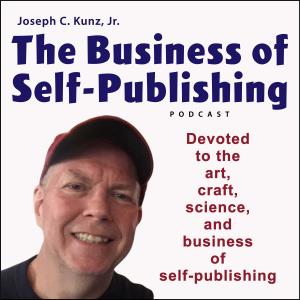The Business of Self-Publishing

3 Tips to Writing a Great Acknowledgements Page
Here is the title for the US and Canada:
3 Tips To Writing A Great Acknowledgments Page
Synopsis
On the surface, the Acknowledgements Page might seem to be an insignificant part of the book. But the competition for authors to gain new readers is very intense. Because of this, we must view every section of the book as an opportunity to reach out and make a connection with the reader – including the Acknowledgments Page. Here are three important and essential tips to help give your book’s Acknowledgements Page some marketing power.
What You Will Learn
1. You will learn why and how the Acknowledgements Page plays an important role in the overall success of the book.
2. You will learn what a good Acknowledgements Page should look like and feel like.
3. You will learn why and how the Acknowledgements Page can help make an emotional connection with the reader.
Introduction
EVERY section of a book is an opportunity to make an emotional connection with the reader, including the Acknowledgements Page. At first glance, this section might seem to be a small and insignificant part of the book. But, you must remember that the competition for authors to gain new readers and followers is very intense.
And because of this, we must view EVERY part of the book, every sentence, every word, every picture, and every chart, as an opportunity to reach out and make a connection with the reader.
Here are three important and essential tips to help give your book’s Acknowledgements Page some marketing power:
Tip # 1. Make It The Appropriate Size
Your book’s Acknowledgements Page will play an important role in the critical and financial success of your book. Therefore, it is essential that you don't skimp on the quality of the information and the quantity of time that you need to put into this section. Do not listen to those that tell you to keep this section “short and sweet”.
There is no such rule about “keeping it down to one page”, or else you risk “boring your readers”. This is nonsense. If your non-fiction book is on the short side, maybe a few paragraphs are enough. A much longer non-fiction book will almost certainly need a longer acknowledgements section. You need to plan this section with some deliberate and strategic thinking while you are developing, writing, and building your book.
Tip # 2. Find A Good One To Emulate
With some research in your library and on the internet, you will be able to find some Acknowledgements Pages that are done correctly and certainly look like they should have a beneficial impact on the book's success. Acknowledgements Pages in too many non-fiction books are poorly planned and not well written. When you see one that is done correctly, you will notice it immediately.
It will look, sound, and feel like it is talking to you with respect, and show you, the reader, how much effort the author put into making his book. It will pull you into the book, and give you an inside look at what went into building that book. As you read it, it will make an emotional connection with you, and you will want to know more about that book and about the author. This is a good acknowledgements page to emulate.
Tip # 3. Do Not Be Superficial
Making superficial statements about your spouse supporting you while you were writing your book, or your hard-working editor, or favorite professor in college, or the famous author you met for thirty seconds, will not help you or your book be a success.
Making superficial statements about anyone will instantly make your readers realize that you are superficial, and not treating your book, the book’s subject matter, or the reader, with the respect they deserve.
You must give your readers an honest, sincere, and insightful view into who and what went into bringing your book to life. It is your job as an author to write this section in a narrative format and in such a way as to keep it interesting. Show your readers all the wonderful and interest...






 Visit Podcast Website
Visit Podcast Website RSS Podcast Feed
RSS Podcast Feed Subscribe
Subscribe
 Add to MyCast
Add to MyCast